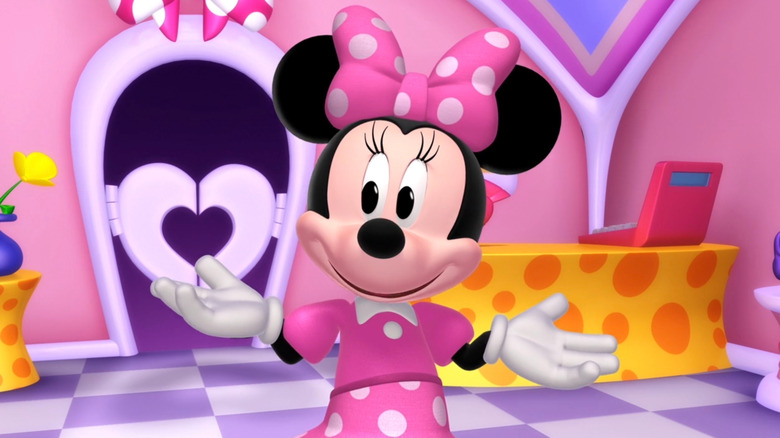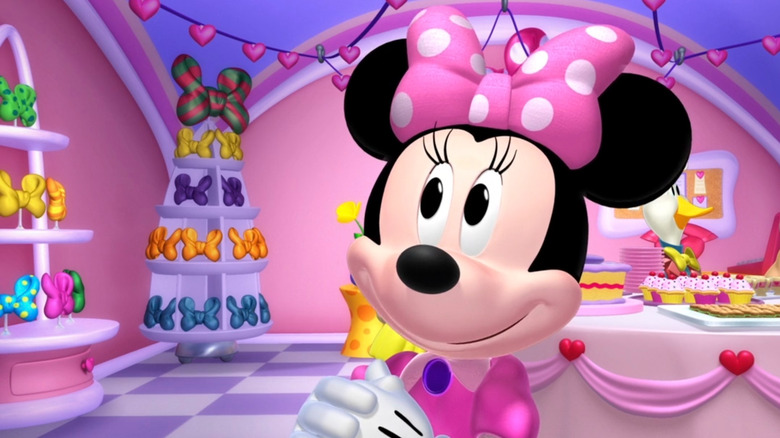The Voice Behind Minnie Mouse Offers Advice For Aspiring Voiceover Artists [Exclusive]
Originally the longtime companion of fellow Disney legend Mickey Mouse, Minnie Mouse eventually broke out on her own and became a cultural phenomenon in her own right. Armed with white polka dots, a pink outfit, and a charming personality, the sweet mouse has entertained generations of children, and her influence has never waned. After being a pop culture icon for almost 100 years, Minnie Mouse can be found in two current Disney series, "Minnie's Bow-Toons" and "Mickey Mouse Funhouse."
Today, Minnie's voice is just as iconic as her polka dot dress and sweet demeanor, so it takes a real pro to pull it off effectively. /Film's Vanessa Armstrong spoke with Kaitlyn Robrock, the actor behind Minnie Mouse's voice, who had some pro tips for aspiring voice artists.
Focus on acting
Aspiring voiceover artists might fall into the trap of equating expensive equipment with success, but Robrock advises against splurging on fancy technology early on. Instead, she said that aspiring voiceover actors should focus on the fundamentals of acting. "Don't worry at first about expensive elements to this career, like a really expensive shotgun mic or a super high-end demo that's been manipulated to make you sound amazing," she said. "All that doesn't bring you talent or understanding of that world. Focus on learning how to act or how to bring points of views to each kind of archetype of character."
Moreover, Robrock emphasized that young voice actors who focus solely on their voice are missing an important component of the job. "It doesn't matter if you don't have a range of sounds in your voice," Robrock added. "Jenny Slate has one voice; John Goodman, one voice; Jason Alexander, one voice. But they are so good at acting and the point of view of their archetypes that it doesn't matter that their voice is exactly the same. It's still a different person."
If you're an aspiring voiceover artist who has gotten a little too caught up in expensive tools or the different sounds of your voice, don't worry. Robrock knows just what you should do, saying, "Stage acting is the best teaching tool for voiceover. In animation, you got to perform for the back of the theater. You've got to show the change in emotion in your voice — they can't see your eyebrows narrowing or your lips quivering."
So get up on the stage nearest you and show the world what you got because pop culture icons like Minnie Mouse couldn't exist without talented voiceover artists.

